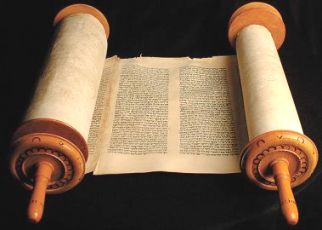Ruth & Naomi – the world of the Bible
What’s the Book of Ruth about?
People often think the Book of Ruth is just a pretty love story. It’s not. It’s a protest story against some of the strict laws passed in Israel at the time – the ‘purity laws’ of Ezra and Nehemiah.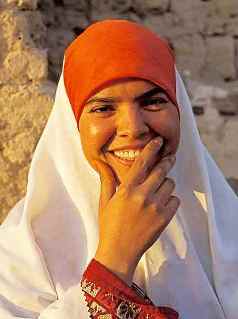
These laws forbad Jewish men from marrying non-Jewish women, and ordered Jewish men to divorce their non-Jewish wives. See Ruth’s story and Ruth: the Bible text.
Many people disagreed. They said a woman’s worth was in her actions, not her blood-line. Boaz agreed. He knew Ruth was from Moab, not Israel, but he loved her and married her anyhow.
It’s good he did: she was loyal, hard-working, and generous – and gave him a great-grandson who was Israel’s hero, King David.
Why were foreigners mistrusted in Israel?
The situation arose because Nebuchadnezzar, king of Babylon, invaded Israel and destroyed Jerusalem and its Temple in 586BC. All the rich and powerful people, and all the leading Jewish families, were forced to leave Jerusalem and live instead in exile in Babylon for a period of about fifty years.
In Babylon these families were well-treated. They were allowed to live together, and given land.
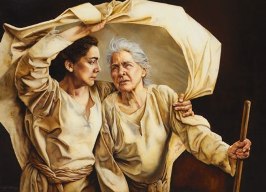
Ruth and Naomi. Courtesy of Sandy Freckleton Gagon.
They were not forced to intermarry or become slaves, but were respected members of the Babylonian empire. They adopted Babylonian names, the Babylonian calendar and the Aramaic language (this was the language that Jews such as Jesus spoke in later times). They assimilated well into Babylonian society, but kept their Jewish identity.
But they faced some basic questions:
- Weren’t they supposed to be Yahweh’s Chosen People?
- Why had Yahweh allowed the destruction of Jerusalem and his Temple?
- What had they done to deserve the terrible things that had happened to them?
How could danger be avoided in future?
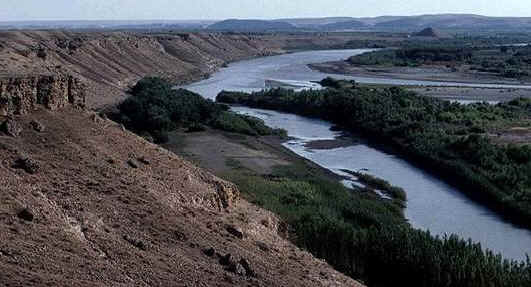
The Euphrates, one of the ‘rivers of Babylon’.
Their prophets and wise men reasoned that disaster had struck because they had not completely abandoned the fertility gods Asherah and Baal in favour of Yahweh as they should have – this must be why Yahweh had given them up to their fate.
It followed that if they repented, Yahweh would forgive them. Hopefully they would be reinstated, first in his favour, then in their homeland.
With this in mind, the priests edited and rewrote the Jewish Scriptures so that the focus was on radical monotheism, the exclusive worship of one god – influencing the development of religious thinking to this very day.
Exiles return to Judah: a second chance
In 538BC Cyrus the Great of Persia issued an edict allowing the Jewish captive population to return to Jerusalem and rebuild their Temple. This was part of an empire-wide resettlement program, but the Jewish captives saw it as evidence that Yahweh was giving them a second chance.
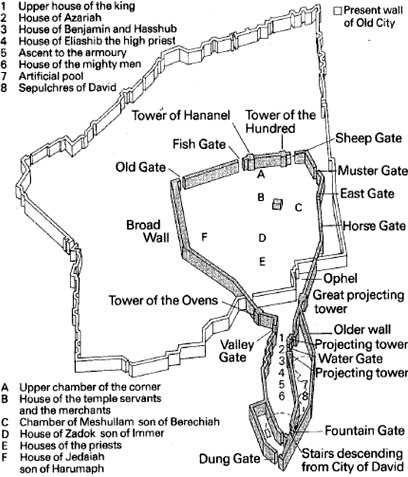
Jerusalem at the time of the Book of Ruth. The city once covered the whole walled area, but after the Exile the population had shrunk so much that it fitted into the smaller City of David, shown by the darker outline
Over a period of time they returned to Jerusalem, and then set about the task of rebuilding Jerusalem and the Temple, the Second Temple (the first Temple had been built by Solomon). They were led by charismatic visionaries called the prophets.
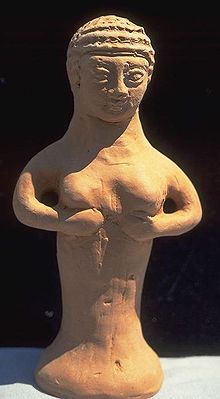
Figurines like this probably expressed ordinary people’s hopes for a good harvest and years of plenty.
Two of these prophets, Ezra and Nehemiah, carried out sweeping social reforms that had a direct bearing on the lives of many women.
What did this mean for women?
Ezra demanded that worship of the fertility gods be completely abandoned. Only Yahweh was to be worshipped.
This was not as difficult to enforce as it might previously have been. Worship of the forces of Nature and fertility had been strongest in the northern agricultural provinces, and the dispersal of these people by the Assyrian conquerors had led to a decline in the popularity of the gods and goddesses like Baal and Asherah.
The problem for women was that religion was now centered on a god whose essence was power and majesty. This deity was a genderless spirit force, neither male nor female, but because power and strength were seen in human terms as male attributes, the deity was increasingly described in male terms.
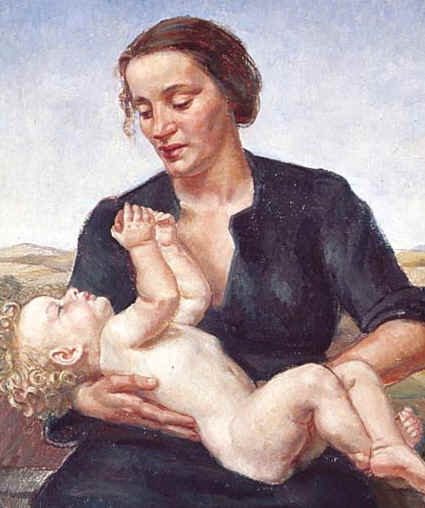
Motherhood, by Nora Heysen
Poetic images of Yahweh had previously used female references, likening Yahweh to a mother and saying that Yahweh’s love was as deep as a mother’s.
These female images of Yahweh were increasingly pushed aside in favor of male images. Sin was linked with impurity and with images that was demeaning to women, for example the reference in Ezekiel 37:17 to menstruation.
When wickedness was presented in human form it was female, as in Zechariah 5:7-11.
Foreign-born wives divorced
The crunch came when Nehemiah demanded that all foreign-born wives who had returned to Jerusalem with their Jewish husbands had to be divorced. The purpose of this edict was to emphasize and purify Jewish identity. Women were judged on their clan background rather than on their personal merits, which undermined respect for women as human beings.
The social reforms of Ezra and Nehemiah were accepted by the people, but not without protest. For example, the stories of Ruth and of Esther, written in this period, make particular points about women, that:
- they were intelligent human beings not disposable chattels
- they were as capable of being God’s instruments as men were.
The Book of Ruth was a protest against
the extreme conservatism of the prophets.
For additional information on the lives of women in the Bible, see the links to
Family, work and religion: the tribe, the family, slaves, women’s tasks, beliefs
Milestones in a woman’s life: Puberty, menstruation, marriage, childbirth, death, burials
Search Box
![]()
Read about more fascinating women of the Bible
Ruth – Bible Woman – Women of the Old Testament; Bible Study Resource
Ruth, Naomi and Boaz: a story of loyalty and love
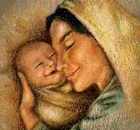
Ten Bible Heroines
Ruth – one of the great Bible heroines


Ancestors of Jesus
Ruth, Tamar, Rahab & Bathsheba

Bible Women’s Lives
Choosing a husband, marrying him
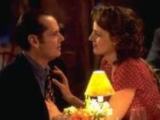
Modern films often tell a story like Ruth’s. In ‘As Good As It Gets’ an over-burdened young woman finds love with a wealthy older man.
Ruth:
Bible study ideas
has a list of movies with similar themes.
Try a reflection on this story: Trust in God or Friendship

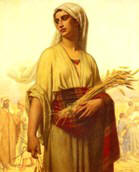

‘Ruth could not be budged. She had shared loneliness, anxiety and grief with Naomi, and now that the older woman was completely alone, Ruth would not abandon her.’
Young People
in the Bible
© Copyright 2006
Elizabeth Fletcher


